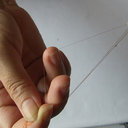Anti-apoptotic action of zearalenone in MCF-7 cells.
Avainsanat
Abstrakti
Zearalenone (ZEA), a nonsteroidal estrogenic mycotoxin, is present in high concentrations in dairy products and cereals. Studies have indicated that ZEA could strongly provoke proliferation in estrogen-dependent breast cancer MCF-7 cells following estrogen ablation. The current study confirmed the previous studies that within the range of concentrations of 2-96nM, like endogenous estradiol, ZEA could stimulate proliferation in MCF-7 cells with inducing a profound increase in S phase and a modest increase in G(2)/M phase that was accompanied by a decrease in G(0)/G(1) phase. The Cell Death Detection ELISA was used to determine whether the robust cell viability retrieved by ZEA was a result of inhibited apoptosis. Data indicated that ZEA-mediated inhibition of apoptosis is significantly evident (P<0.05) and in a dose-dependent manner. Western blot and multiple RT-PCR analysis revealed that the anti-apoptotic bcl-2 was upregulated at both protein and mRNA levels, together with the downregulation of pro-apoptotic bax. In short, the results here showed that ZEA possessed comparative estrogenic activity and could promote the progression of MCF-7 cells through the cell cycle by a decrease in G(0)/G(1) phase and a significant increase in S phase. The pro-proliferative activity of ZEA was due to inhibition of apoptosis through regulation of bax/bcl-2 expression. Therefore, we conclude that contamination of ZEA in food might contribute to the increasing incidence rates of breast cancer.


